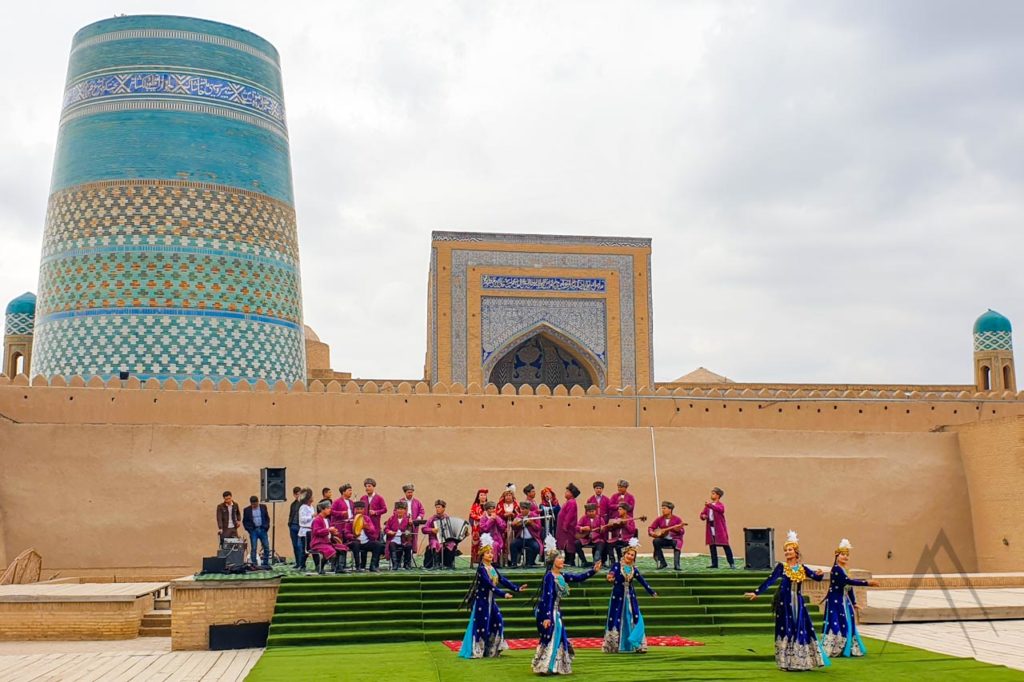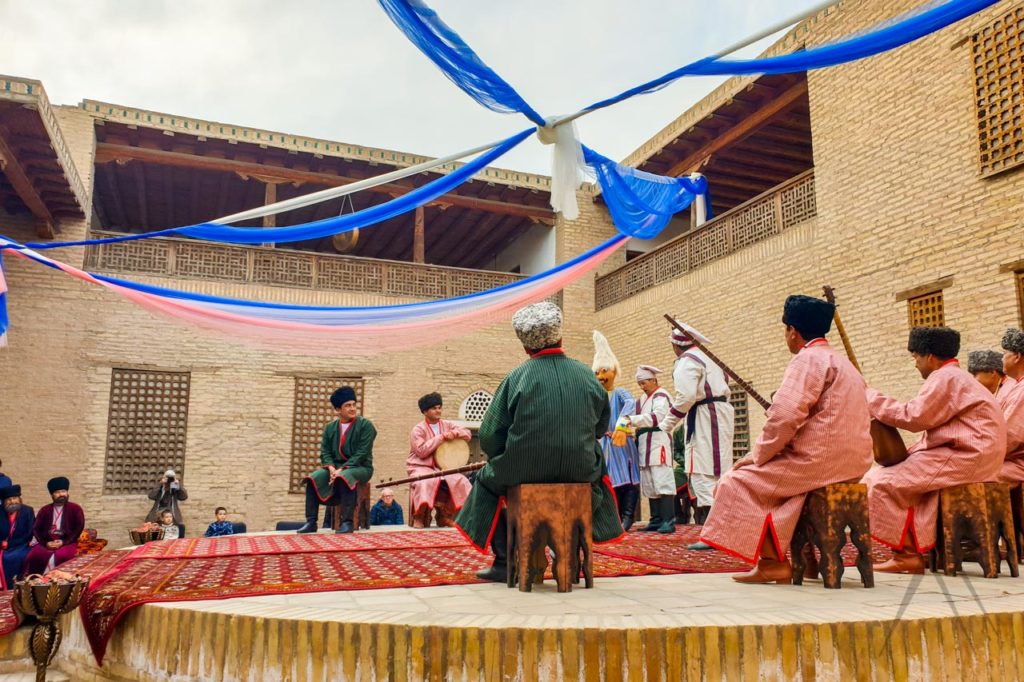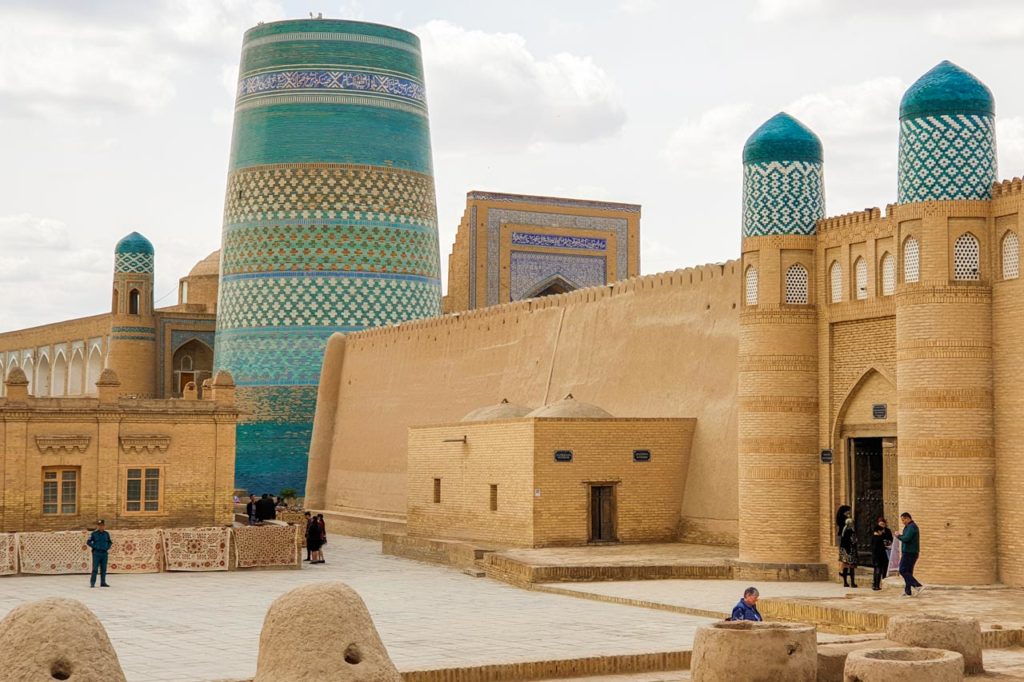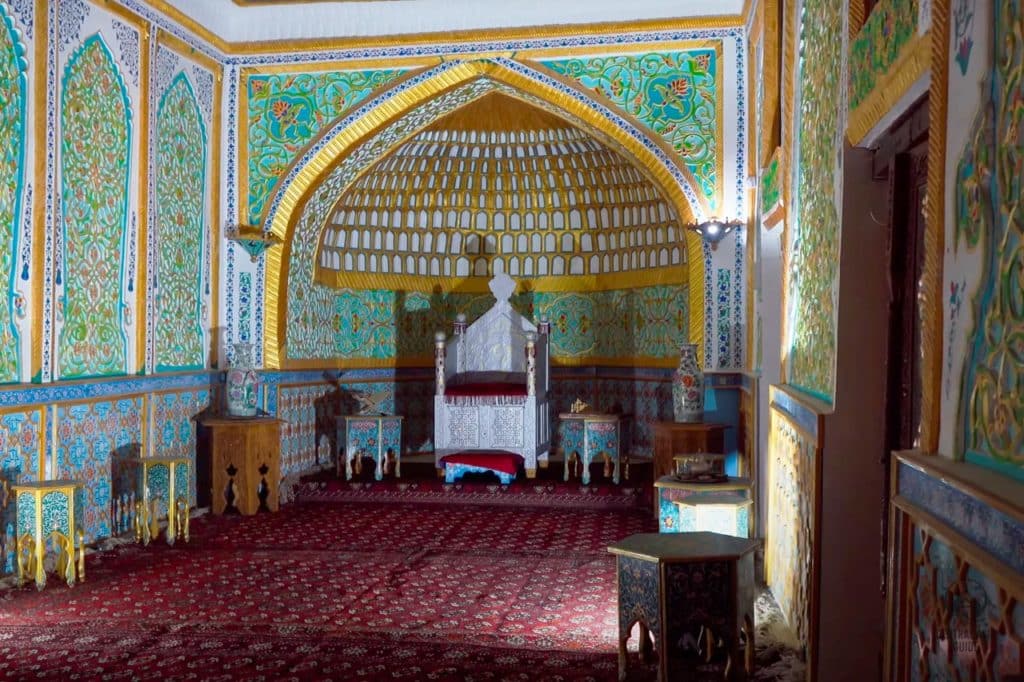Kunya - Ark Fortress
Kunya-Ark Fortress The First Palace of Khiva
Kunya Ark is the Khiva‘s rulers’ citadel (fortress) and residence, first built in the 12th century by one Ok Shihbobo and expanded by Muhammad-Erenk Khan (1687-1688) in the 17th century. Kunya (or Kuhna) Ark translates as “Old fortress” and it has gotten this name in contrast to the “new” palace called Tash-Khovli, built by Allakuli-khan at the eastern gate of Ichan-Kala.
The Kunya Ark stands at the northern side of the Khiva’s west gate and it became “a city within the city” at the end of the 18th century, separated from the rest of Ichan-Kala by a high wall surrounding the whole yard of the palace. Kunya ark was not the only palace of the the khans of Khiva but they had several residences during the era before Russian and Soviet rule, including the Tash Hauli of Allakuli Khan and Nurullabai Palace of Isfandiar, yet the Kukhna Ark remains the original and for centuries provided a fortified refuge during times of change.
Nowadays, Kunya Ark is a place where Uzbeks proudly present traditional music and dance performances along with the plays of historical events that took place in Medieval Khiva due to the renaissance of the Uzbek culture that is taking place currently.


Current Kunya Ark palace
Kuhna Ark holds the Khan’s mosque and residence, supreme court, reception (kurinysh-khan), powder mill, arsenal, mint, registry, harem, kitchens, stables, guardhouse and other structures. The initial structure of the Khan’s reception (kurinysh-khana), built by Muhammad-Erenk, was destroyed in the middle of the 18th century when Iranian troops attacked the Khanate.
Today’s Kunya Ark buildings were built in 1804-1806 by Iltezer-khan (1804-1806). The foundations of the Ark date from the 5th century, but the largest part of the complex was added in the 19th century by progressive khans. The bases of the Kunya-Ark fortress were arranged around the courtyards and the courtyards were linked with a corridor system.
Kunya Ark Darvaza (Gates)
The entry to the fortress was finished with a gate resembling the Palvan-Darvaza. The towers of the gate were earlier covered by lanterns with turrets connecting them to the fortifications. The entrance gate of the Arch was built according to the traditional scheme: in the center, there is a through passage (length – 6.8 m, width – 3.2 m) and on the sides, there are guardrooms. The facade is decorated with a portal with towers protruding at the edges and a gallery at the top. The gate was restored in 1969-1972.

Kurinysh-khana Reception Room
The first building of the kurinysh-khana was built in 1686-1688 by Arang Khan and was destroyed in the middle of the 18th century during the invasion of Iranian troops. In the first small courtyard, uniting the gate, ambassadors waited to be received by the Khan.
Seven guns with gun carriages were located in the second courtyard, and in the third, the Khan’s council gathered. The largest courtyard was entered through a corridor “kurinish-khana”, where a yurt was established in the center on a round platform, where the Khan sat and received his guests.
Heading west for the Kurinish Khana or Throne Room (1804-06), where the khan would grant a public audience, either in the open summer iwan or in a warm winter yurt set upon its circular brick platform. Open-air throne room is where khans gave judgment (if not justice). The circular area on the ground was for the royal yurt, which the no-longer-nomadic khans still liked to use.
The round area on the ground was for the royal yurt, which the no-longer-nomadic khans still liked to use. The small court has beautiful ceiling decoration and geometric tilework, with fine ganch and a decorated mihrab in the room behind.
Kunya Ark Throne room
It was here that the wooden throne of the khan, built in 1816 and gilded in silver, traditionally stood until it was carted off to the Armour Chamber of St Petersburg’s Hermitage Museum by the victorious Russians. The Uzbeks continue as yet unsuccessful negotiations to retrieve their stolen heritage.
Other treasures are stored and sometimes displayed in the Arab Mohammed Khan Madrassah, now the site of the Khivan ‘Fund’. This collection includes staggering 55 000 objects taken or bought from the local people in the 1920s.

Other Khiva sights
Page updated 15.4.2022